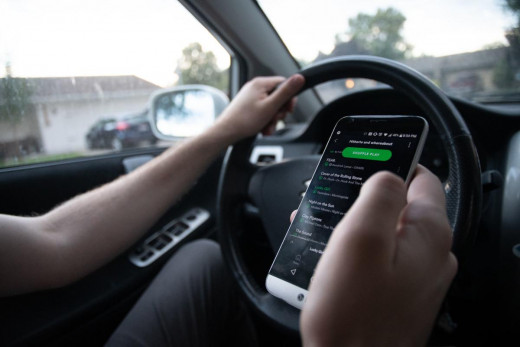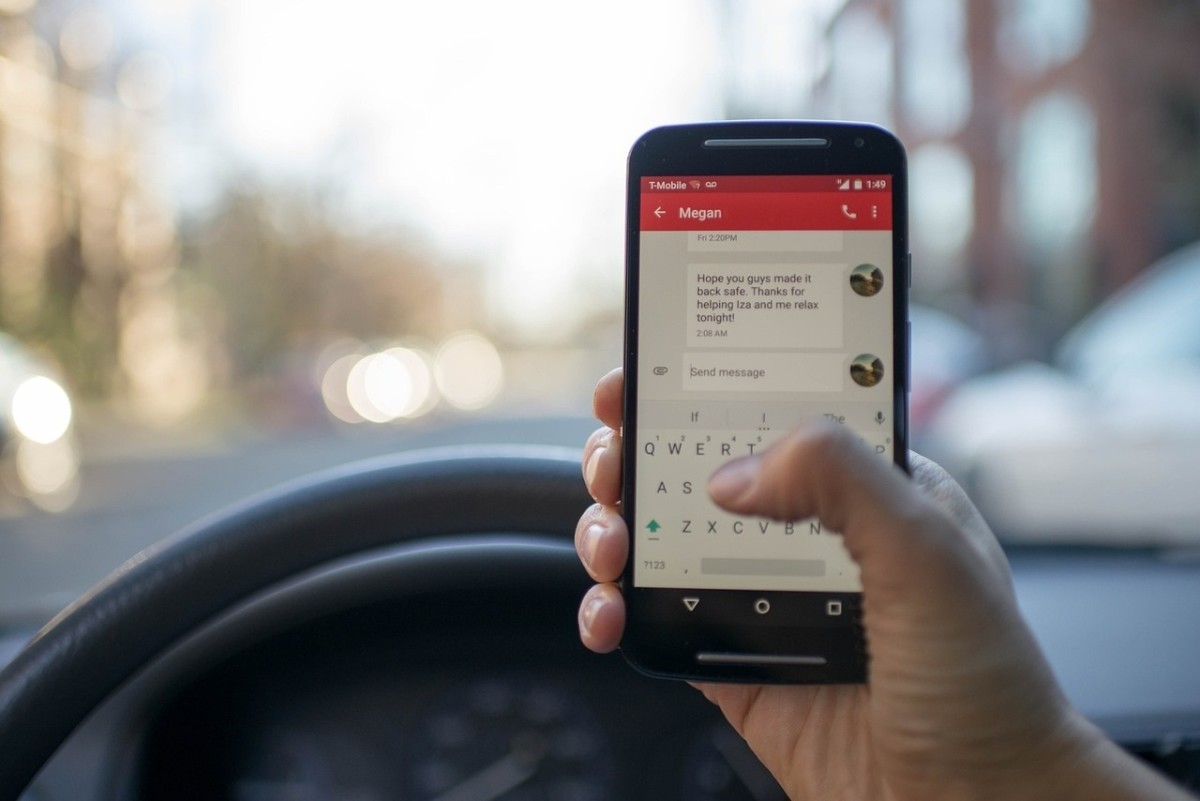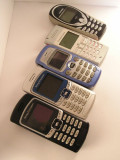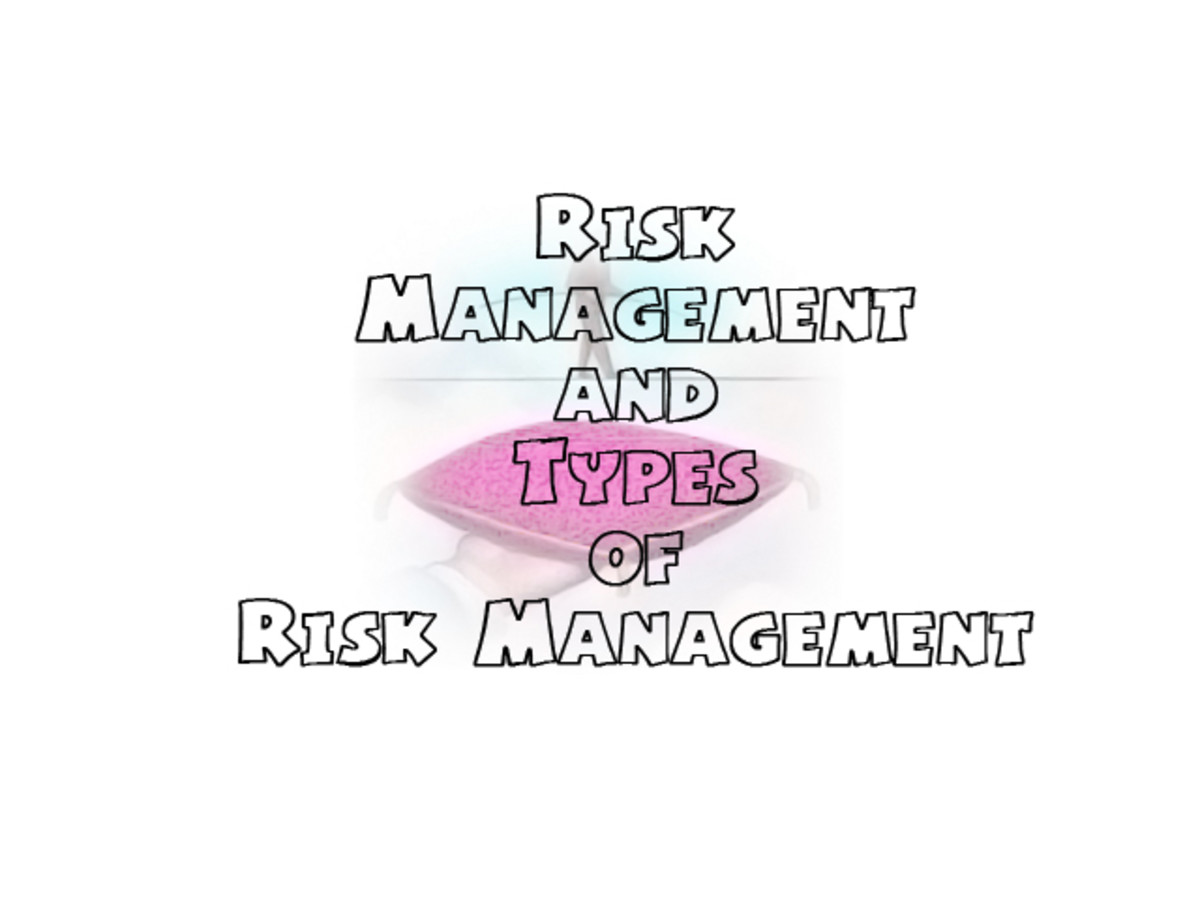- HubPages»
- Business and Employment»
- Business Insurance & Liability»
- Risk Management
Auto Risk Management
Conclusion
The issue of cell phone usage while driving is an emotional, complicated, and many-sided one. One of the problems is the lack of uniform information about the involvement of cell phone usage on automobile accidents. Only a few states require this information on police reports. The NHTSA, with the help of Congress, should make a stronger effort to compel states to include this information on police reports and provide guidelines concerning uniform ways to report this information. This accomplishment will assist researchers and regulators in understanding the extent of the problem. However, with the limited and weak data currently available, more regulations concerning any type of cell phone ban by drivers are unwise and unwarranted. Stricter enforcement of existing driving laws, improved data collection regarding cell phone involvement in auto accidents, advancements in telematics, and widespread driver education are the current solutions.
Wise Legislation?

Auto Risk Management
During the past few years, a growing debate has arisen concerning whether the use of cellular phones by drivers leads to more accidents. One study indicates that driving while talking on the phone increases the risk by four.
Another study shows that driving while distracted, such as adjusting the radio, engaging in a heated discussion with a passenger, or talking on the phone, may cause between 20 and 30 percent of all United States automobile accidents.
Other studies, based on driver simulation tests, conclude that people have difficulty multitasking.
In addition to standard driving and cell phone studies, several neurological studies have focused on mapping and monitoring the human brain during singular and multiple cognitive tasks. Yet another way of examining this problem is via cost/benefit analyses. One major study indicates that the costs of a ban on cell phone usage by drivers vastly outweigh the benefits.
The assumptions and conclusions of these studies, however, have been challenged by still further studies.
While uncertain about which studies to believe, regulators have attempted to craft legislation to address this problem. This legislation is often ill-conceived, based on anecdotal evidence, and difficult or impossible to enforce. Alternative solutions need to be developed, implemented, monitored and fine-tuned. In addition, it is necessary to review current regulations and problems associated with it, such as enforcement issues and freedom of speech concerns. Thus, the debate over cell phone usage while driving focuses on the issues of the validity of cell phone and driver distraction studies, cost-benefit analyses, current regulation, and alternative solutions outside strict regulations.
Assessing the Problem
Automobile accidents are a major cause of death in the United States and are the single most common cause of death among children and young adults. According to the U.S. National Highway Traffic Safety Administration (NHTSA), over 6 million police-reported automobile accidents occurred in 2001, which constitutes 1 every 5 seconds.
On average, a person was injured in one of these crashes every 10 seconds and a person was killed every 12 minutes. The NHTSA estimates that the annual cost of automobile accidents is $230 billion.
Cell phone usage has skyrocketed in the United States during the last 20 years. There were only a few thousand cell phones in 1983.
According to the Cellular Telecommunications and Internet Association (CTIA), cell phone usage has shown a steady increase as follows.
- 9 million in 1992
- 38 million in 1996
- 97 million in 2000
- 134 million in 2002
Furthermore, the NHTSA estimates that approximately 73 percent of subscribers use their cell phones while driving.
Given the large increase in cell phone ownership and the estimate of usage, while driving, an increase in automobile accidents might be assumed. However, no such increase has been observed. According to the NHTSA, the 1983 fatality rate per 100 million miles traveled was 2.6. This rate declined to 1.5 in 2001, a reduction of 42 percent. For injury-related accidents, the rate in 1988 was 169 per 100 million miles traveled. In 1999 the rate was 120, a 30 percent decline. In 2001 it fell further to 109, a 9 percent drop in 2 years. In short, automobile accident deaths and injuries continue to drop. This decrease may be due, in part, to improved seat belt usage, tougher driving under the influence (DUI) of alcohol or drug laws, and automobile safety features. However, there is certainly no evidence to suggest that increased cell phone usage has significantly affected the automobile accident injury or death rate.
Cell Phone and Driving Studies
There are a host of studies focusing on the usage of cell phones while driving. One of the most highly publicized reports appeared in the New England Journal of Medicine in 1997. The researchers, Donald Redelmeier and Robert Tibshirani, used an epidemiologic methodology to study whether using a cell phone while driving increased the chance of an auto accident. They studied 699 drivers with cell phones who were involved in automobile collisions that resulted in substantial property damage. To improve accuracy, they analyzed each person’s cell phone calls on the day of the collision and during the previous week by accessing detailed billing records supplied by the cell phone providers.
The researchers examined over 26,000 cell phone calls made during the 14-month study. They found that the risk of collision when driving while using a cell phone was 4 times higher than without using the phone. The risk was similar for different ages, genders, and socioeconomic standing, although drivers without a high school diploma experienced the highest relative risk. In addition, hands-free cell phones were not found to be safer than hand-held phones.
Surprisingly, this four-fold risk was similar to the hazard of driving with a blood alcohol content at the legal limit. However, the study also found that cell phone usage in cars allowed drivers to make emergency calls quickly. Some of the drivers in the study used their phones only after the accident, thus avoiding any increased hazard and utilizing the benefits of the phone.
Recognizing some of the limitations of their study, the researchers urged prudence to lawmakers.
We caution against interpreting our data as showing that cellular telephones are harmful and that their use should be restricted. Even if a causal relation with motor vehicle collisions were to be established, drivers are vulnerable to other distractions that could offset the potential reductions in risk due to restricting the use of cellular telephones. Regulations would also mean reducing benefits; in Canada, for example, half a million calls to 911 emergency services are made from cellular telephones each year.
The researchers clearly recognize the complexity of this issue and understand that there are no simple answers.
This study was challenged on many fronts, particularly concerning the parallel conclusions about driving while using a cell phone and driving while under the influence of alcohol or drugs. A few months later, Redelmeier and Tibshirani clarified their earlier conclusions on this point. They stipulated that “the overall risks of driving while intoxicated are much greater than those associated with cell phone usage.”
The researchers recognized that a blood alcohol level greater than the legal limit posed much higher hazards than cell phone usage. They also granted that “alcohol stays in the bloodstream for several hours, whereas a typical cell phone call lasts only 1 or 2 minutes.” The authors clearly recognize that the two risks are not on the same level.
In 2001, Redelmeier and Tibshirani again clarified their earlier study. They specified in the Canadian Medical Association Journal that the four-fold risk factor increase “was not calculated in comparison to the risk of a collision under ideal circumstances of no distraction … the increase was relative to the risk of collision when the driver drove with his or her usual background distractions.”
The researchers emphatically recognized that a multiplicity of factors can cause an automobile accident.
Neurological Studies
A neurological study published in 2001 appeared to support Redelmeier’s 1997 study. Carnegie Mellon University scientists studied images of the brain at work and concluded that humans cannot converse on cell phones without distracting the brain from the task of driving.
Using noninvasive techniques to see inside the brain, scientists read sentences to 18 people while they were performing a complex visual information-processing task. The researchers concluded that listening to someone speak consumes some of the resources that would otherwise focus on a complex visual task. They specified that “the fundamental implication is that engaging in a demanding conversation could jeopardize judgment and reaction time if an atypical or unusual driving situation arose.” The scientists further argued that hands-free phones would not help since the conversation itself is what distracts the brain.
A 2001 University of Utah study involved 64 undergraduate students engaged in driver simulation sessions.
The study assessed the effects of cell phone usage while driving and found that when drivers are deeply involved in cell phone conversations, using either a hand-held phone or a hands-free device, they were twice as likely to miss simulated traffic signals. This type of use constituted a higher hazard than listening to the radio, a compact disc, or a book on tape. This study suggests that active involvement in a cell phone conversation adversely affects driving performance by diverting attention to an engaging cognitive task outside driving.
The authors questioned the legislative initiatives that restrict hand-held devices but permit hands-free devices since the latter devices “are not likely to reduce interference from the phone conversation, because the interference is, in this case, due to central attentional processes.” The banning of hand-held phones has occurred in more than a dozen countries, in New York state, and a few cities within the United States.
Another simulated driving study, however, found that driving during a relaxed telephone discussion did not affect performance at all.
This study concluded that simply speaking over a hands-free telephone while driving did not impair performance. However, a more difficult, complex conversation may adversely affect driving, and “any prolonged manipulation of the telephone is liable to produce a performance decrement, particularly under conditions that put heavy demands on the driver’s attention and skill.” Other studies have also indicated that hands-free devices may be slightly safer.
These types of laboratory studies have the advantage of being able to carefully control and monitor the administration of a hypothetical risk factor or exposure, such as a cell phone conversation. Driver simulation studies, however, are limited in their ability to assess the effect of cell phone usage on the actual outcomes of greatest concern: traffic accidents and resulting injuries or fatalities.
Many analysts argue that driving is an inherently complex and multifunctioning task, with a wide array of variables and unique driving situations all contributing simultaneously to a crash. These are circumstances the studies cannot simulate. As a result, it is unwise to pass legislation based solely on simulated driving studies.
Quantifying Driver Distractions
The driver distraction debate began nearly 100 years ago. In 1905 the debate focused on the safety of windshield wipers and their seemingly “hypnotic effect” on drivers. When Motorola introduced radios in cars in 1930, regulators from several Northeastern states proposed banning them for fear that they would distract drivers. These items, however, are now standard features on automobiles.
The Department of Transportation estimates that driver distractions are a contributing factor in 20 to 30 percent of automobile accidents. However, distractions can be hard to quantify, and the number of accidents due to driver distractions is very difficult to define. What can further complicate matters is that there may be more than one distraction, such as eating while chastising a child in the backseat.
Under the auspices of the American Automobile Association (AAA) Foundation for Traffic Safety, a 5-year study was conducted by the University of North Carolina Highway Safety Research Center on the types of driver distractions. Professional crash investigators gathered data at the scene of accidents. They examined the vehicles involved, interviewed the crash victims and witnesses, and evaluated relevant medical records. They found the following percentages of drivers were distracted by the causes listed.
Types of Driver Distractions% of DriversCause of Distraction34.2Unknown or other29.4Outside person, object, or event11.4Adjusting the radio, cassette, or compact disc player10.9Another occupant4.3Moving object in vehicle2.9Using other device or object2.8Vehicle climate controls1.7Eating or drinking1.5Using or dialing a cell phone source: National Conference of State Legislatures, Along for the Ride: Reducing Driver Distractions, 2002
There are, however, several weaknesses inherent in this study. Many people are very reluctant to admit that cell phone usage contributed to the accident. This concealment may be due, in part, to some negligent drivers believing their culpability is increased if the cell phone usage caused the accident. Also, many cell phones are small and hard to spot, and some drivers utilize hands-free phones, making detection more difficult. Another weakness is that the data was collected from 1995 to 1999, a period of time in which cell phone usage was far below today’s level. In addition, as indicated above, more than one driver distraction can lead to an accident. Situations like these are difficult to quantify. Nevertheless, even if the percentage listed above is moderately adjusted upward to account for some of these limitations, the percentage is still relatively small.
Cost/Benefit Analyses
The cell phone and driving issues have been the focus of several cost/benefit analyses. A 2000 study conducted by researchers with the American Enterprise Institute (AEI) utilized mathematical and econometrical models to estimate that $25 billion would need to be paid to cell phone users if they were not allowed to use their phones while driving.
In other words, what is the worth to drivers, on a cumulative basis, of using their cell phones in the automobile? This figure was based, in part, on the price elasticity of cell phone demand, costs of cell phone usage, and percentage of use in cars. Their marketing surveys estimated that 60 percent of cell phone time occurs in driving situations.
Economists used state and national data to measure the benefits of banning cell phone usage by drivers based on deaths, property damage, and injury costs. Their data suggested that approximately 80 fatalities out of 41,000 national fatalities each year are associated with cell phone usage. However, this figure is much lower than the figure found under the 1997 Redelmeier study. Thus, the researchers used a weighted average of the two studies: 300 deaths and 38,000 injury-involved accidents annually attributed to cell phone usage. They also utilized earlier NHTSA studies that monetized the economic costs of automobile accidents. After adjusting for inflation and other factors, the AEI study found that the annual costs of all traffic accidents are $630 billion. The researchers concluded that cell phone usage causes approximately .74 percent of all accidents, and calculated that costs of this use to be $4.6 billion per year. Thus, banning cell phone usage by drivers would result in benefits or a savings of $4.6 billion.
As a result, the cost-benefit analysis shows that the net costs of a cell phone ban by drivers are approximately $20 billion: $25 billion costs less $4.6 billion in benefits. However, one factor excluded from this equation is the cost of enforcing a ban on cell phone usage. Law enforcement officers would need to be removed from other assignments to focus on this effort. It is already well documented that law enforcement agencies throughout the country are often unable to adequately enforce the existing laws, due to budget deficits and staff shortages. A cell phone ban would further aggravate these existing problems.
A study at the Harvard Center for Risk Analyses in 2003 estimated that 2,600 deaths are attributable to driver cell phone usage.
However, the researchers recognize that the range of uncertainty is immense. For example, the fatality estimate ranges from 800 to 8,000 annual deaths, and they found that injury-related accidents due to cell phone usage range from $100,000 to $1 million. Even with higher numbers attributed to this cause as compared to the AEI study, these researchers estimated the costs and benefits are equal but acknowledged that the range of costs and benefits are extremely broad.
It is interesting to compare the 2,600 deaths figure to other causes of auto-related deaths in the United States. In a May 2001 hearing about this issue before the United States House Subcommittee on Highways and Transit, Robert Shelton, Executive Director of the NHTSA said “many more people die due to not wearing seatbelts … only 71 percent of auto occupants wear seatbelts.” NHTSA statistics also found that alcohol-related crashes resulting in 17,448 annual deaths, and accidents involving speeding took 11,371 lives.
Legislating a Solution
The National Conference of State Legislatures (NCSL) reported that since 1999 virtually every state has considered legislation concerning cell phone usage by drivers.
Very few bills, however, involved an outright ban on cell phone usage while driving. Instead, many of the bills focused on increased and uniform data collection of cell phone involvement in accidents. Most of these laws, however, have died in legislative committees. In addition, an estimated 300 towns, cities, and counties have considered ordinances, with a few having passed laws banning cell phone usage in some manner.
Eleven states have enacted some type of restrictions regarding cell phone usage while driving. For example, Arizona prohibits bus drivers from using a cell phone while operating a bus. Florida has a specific law concerning cell phones with headsets, stipulating that the headset allows outside sounds to be heard through at least one ear. New Jersey does not allow drivers under age 21 with a learner’s permit to use a cell phone while driving. New York’s law, enacted in 2001, is the most extensive. This state forbids drivers from talking on hand-held cell phones while operating a vehicle, despite numerous studies that indicate the enhanced risk is the same for hand-held phones and hands-free phones.
At least 24 countries have restricted the use, in some way, of cellular phones in cars. Over a dozen countries, such as Australia, Brazil, Spain, and Switzerland prohibit the use of hand-held cell phones while driving. Israel, Japan, Portugal, and Singapore prohibit all cell phone usage while driving. Drivers in the Czech Republic, France, the Netherlands, and the United Kingdom may face fines if they cause crashes while using cell phones. Drivers in the United Kingdom and Germany can lose automobile insurance coverage if they cause a crash while using the cell phone.
In 2001, U.S. Senator Jon Corzine and U.S. Representative Gary Ackerman introduced a bill that would have severely restricted cell phone usage for drivers; the bill subsequently died in committee. The NCSL acknowledges that federal law clearly governs equipment embedded in automobiles. But driver behavior “is a state issue. States, rather than the federal government or … the local jurisdictions … should decide whether to regulate the use of wireless telephones and other communications, information, and entertainment technology in motor vehicles.”
However, the difficulty with implementing local laws is that many out-of-town motorists would be unaware of such laws.
The NCSL wisely recommends that all states should collect data about cell phone involvement in auto accidents in a uniform manner. This may result in a better understanding of the extent of the problem. States should also include information about driver distractions and technology devices in all driver education programs. In addition, the federal government and states should work together on the issue of driver education. The NCSL also contends that better enforcement of driver distractions with current laws is warranted.
The laws have different names such as negligent, careless, inattentive or improper driving or driving without reasonable control of the vehicle. Generally, these laws give law enforcement officers broad discretion to cite motorists for any behavior—such as eating, drinking beverages, using a CD player or using a cell phone—that causes hazardous driving. According to the industry position, enforcement against careless driving may be the best method to resolve the issue of driver distraction. The laws target the improper operation of a motor vehicle. Moreover, many of these laws already exist and the application of the law is well-established.
The NCSL currently believes that any type of cell phone ban for drivers is premature and unwarranted.
Another regulatory issue concerns First Amendment rights under the Constitution. In the U.S. House of Representatives hearings on this issue in 2001, several congressmen expressed concerns about the conflict between certain types of legislation and the Freedom of Speech Amendment. Representative Robert Simmons believes that the basic standard of speech would apply.
Safe speech is protected and dangerous speech is not. If you are speaking on the cell phone and it creates a hazard, then you should be susceptible under the reckless driving statute to being stopped, arrested, and ticketed … But essentially your right to use a cell phone ends where my bumper begins.
Some legal experts believe that the First Amendment concerns about this issue are moot because the amendment is meant to regulate content; not time, place, or manner restrictions. For example, courts have upheld that a person cannot broadcast on police frequencies.
Others believe that the amendment can be applied to time, place, or manner.
Engineering a Solution
While the legislation does not provide an easy answer, there are a number of steps that can be taken to mitigate dangerous cell phone usage by drivers. One potential area involves automotive telematics: the use of computers and telecommunications to enhance the functionality of motor vehicles, such as wireless data applications in cars and trucks. This development is important since some simulated driving studies indicate that hands-free phones are slightly safer than hand-held devices. There are many documented cases in which the driver admitted to causing an accident when they dialed or reached for the phone. Telematics may be useful in decreasing these types of accidents.
In 2002, a group of engineers from Chrysler, IBM, and AT&T Wireless introduced a simple method for talking hands-free on the cell phone in a car.
This technology uses special radio frequencies to enable hand-held cell phones to communicate with the “head unit” in the car’s dashboard, which stores and processes simple voice recognition commands. With this technology, drivers can simply lay their hand-held phones on the front seat of the car while they converse. This allows the phone to synchronize with the vehicle architecture over radio frequencies. Using it, drivers will be able to talk through a microphone located near the rear-view mirror and listen to their phone conversations through the vehicle’s speakers. Many other automobile manufacturers are also developing telematic systems.
Telematics has even broader implications. Some new cars are equipped with an electronic feature that calls for emergency help when sensors recognize an airbag has been deployed. Advances in intelligent transportation solutions will be able to assist motorists with traffic congestion. Onboard navigation systems using global positioning systems have made great improvements during the last few years. It is conceivable that cars of the future could receive an alert of congestion, have an on-board computer process the information and compute an alternative route, and then give the motorist directions over the automobile’s radio.
Driver Education
Another key area to address this issue is driver education. It is essential that drivers be aware of the hazards of using cell phones while driving. Some safety experts offer safe cell phone usage tips.
Cell Phone Usage Tips
-
Drivers should wait until the car trip is complete before placing a call. The voice mail should answer a call while the person is driving.
-
Absolutely essential calls should only be performed while stopped. However, it is not wise to pull over on the side of the road, where a rear-end collision is possible. Instead, the driver should pull into a parking lot to perform this task.
-
The phone should be placed where it is easy to see and reach.
-
The driver should take advantage of speed dialing capabilities.
-
The driver should never drive during stressful, emotional, or complex discussions, as the risk of an accident is heightened.








